Perhaps the easiest way to begin this article is to acknowledge there are two groups of people that go to the gym (generally). There’s the individual most focused on power lifting and strength, and there’s the individual who is there to build an aesthetically pleasing physique. Now, don’t get this wrong. The two are certainly not mutually exclusive, in fact, they can be combined and often are. Many, if not most, look for the total package of strength and size, all the while developing an aesthetic physique. However, for the purpose of this article, as is the purpose of every article in our aesthetically pleasing series, the single most important objective is that of building a beautiful body. As a result, the discussion will be tailored to those whose primary goal is to do so. With that said, an extremely common mistake is often committed by an individual attempting to build a great body. This is not restricted to novice lifters, as veterans struggle to overcome this as well. It is a debilitating mistake, one that greatly hinders the overall objective of building an aesthetically pleasing physique. That mistake is weight-lifting instead of bodybuilding. For a great introduction, check out the video below:
Weight-lifting is what we’re told to do. It’s what we read grows the muscles and transforms our bodies. The more weight you lift, the bigger you are. Bodybuilding is only the name of what people who compete in shows do, not the casual lifter. Of course, that’s what we’re told and that’s what we come to believe. Nobody ever tells us all of this is completely wrong.
If you’re trying to build a great body, you have to sculpt that body. You have to train in the gym in a way that maximizes your ability to build that muscle. That method of training is vital to your ability to build an aesthetically pleasing physique, and weight-lifting simply won’t cut it. It’s not about the weight you can move with your muscle, it’s about your ability to tax the intended muscle to a point it has no choice but to grow. In other words, to reach muscle fatigue.
Now, can weight-lifting give you what you need to reach muscle fatigue? Of course it can. However, the problem with weight-lifting isn’t its ability to tax your muscles. After all, if you load up on the weight and push yourself to the limit, it’s hard to imagine you wouldn’t destroy your muscles enough for them to grow. The problem with weight-lifting, then, is the sloppy set of consequences and unnecessary complications that come with it. All of which do nothing but impede an individual’s goal of attaining an aesthetically pleasing physique. Let’s examine a few of the things weight-lifting promotes:
1) Muscle Asymmetry – to be aesthetic, you require symmetry and proportionality. Flinging weights around and simply “doing the movement” brings all sorts of troubles. It allows any muscle group involved in the exercise to take over, and hinder the primary muscle group from getting hit the way you intend it to be hit. Let’s take a very common example to illustrate this point. If an individual is bench pressing, they are doing so presumably to develop their chest. Considering both the triceps and shoulders are heavily involved in benching, an individual who loads up as much weight as possible will be using all 3 muscle groups to push the weight up. Their ability to control how much shoulder/tricep involvement is present is severely limited. As a result, not only are those other groups getting more stimulation than is necessary, but they will also be trained on their own. When you do them, however, your chest is not involved (Close Grip Bench excluded). With this then, the shoulders and triceps are worked much more than the chest on a particular individual’s weekly routine. Unless their triceps and/or shoulders are lagging behind, this will only stimulate that individual’s muscle groups to grow at a different pace instead of equally. Instead of muscle symmetry, there will be muscle asymmetry. The exact opposite of what someone looking to build an aesthetically pleasing physique wants.
2) Inefficient Muscle Fatigue – for the same reasons stated above, often individuals struggle to develop a particular body part. Weight-lifting is the root cause of this failure because other stronger body parts overpower the weaker body parts and do not lead that muscle to muscle fatigue. When that happens, you walk out of the gym thinking you had a great chest day, when in fact your chest wasn’t as punished as you thought it’d be. Your shoulders and triceps did too much of the work. This insufficient level of stimulation of that body part in the gym means there’s going to be no growth, and over time the muscle group will lag behind. This is especially the case when people use a certain routine long-term, their inability to realize they’re not taxing that body part enough to grow is compounded over time as they stick to the same routine happy that they are increasing in weight. Those shoulders or triceps could be handling that extra weight increase, while that chest stays struggling and isn’t growing. They’re left to wonder why!
3) Injury – nothing quite like pulling a muscle because you wanted to push more weight. Can’t get the weight up in a controlled manner? No problem, jerk your body, use every muscle imaginable to get it up. Besides running into the two problems mentioned above, this obviously also creates a much greater risk of injury. If that risk is realized, you’re not building any physique for a while. Keep that in mind.
In order to avoid these problems and focus on aesthetics, the most important component of body building is using the mind muscle connection. Instead of grabbing the most maximal weight you think you can do with your body, use a weight you can do solely with the body part you are targeting. Exclude every other body part as much as you physically can, and do your exercises in a slow and controlled manner. No jerking, no pushing of weight. If you can’t get the weight up on your last rep or two, either get a spot or stop. Take a couple seconds rest, and go back up and do an extra rep to finish off the set. In other words, if you wanted to get 8 reps but only got 6 on your first try, wait a few seconds and try to get 3 more reps (last one to make up for the time-off you took).
You have to understand, if your goal is to be aesthetically pleasing, your goal is to develop and sculpt each and every muscle in your body. The best way to do this is to target that muscle, and that muscle only on its specific training day. If you come in to do chest, you’re not coming in to do bench press, incline press, and chest flyes just do to them. You are coming in to do chest, chest, and more chest – hitting it at varying angles and in varying ways. Do not let your shoulders take over, try to minimize tricep involvement. Your objective for that day is chest, that’s it. All those other muscle groups have their own time. With that said, I don’t want to confuse people into thinking they shouldn’t be doing compound movements that hit multiple muscle groups. They are fantastic and should be an integral part of your workout, however, each and every one of those compound exercises still has the main muscle group it is supposed to target. So when you do bench press on chest day, use that chest. That’s what you came in the gym for, even though the exercise as a whole will benefit more than just your chest. For more information on how you can hit your muscles in different ways to help achieve muscle fatigue, check out our Weight Training Tips article. Good Luck!
*Common Mistakes During Certain Exercises
1) Bench Press – minimize shoulder/tricep involvement
2) Lat Pulldown/Pullups – minimize bicep involvement
3) Squats – minimize lower back involvement
4) Lateral Raises – minimize trap involvement
Also for those interested, here’s a list of the best exercises based on an EMG study.

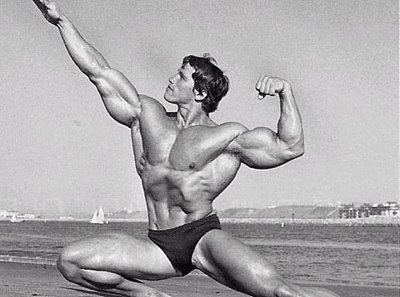
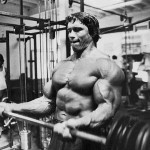

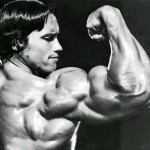
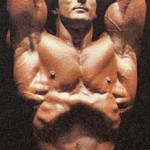
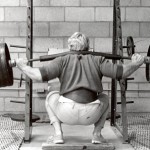

2 Comments »